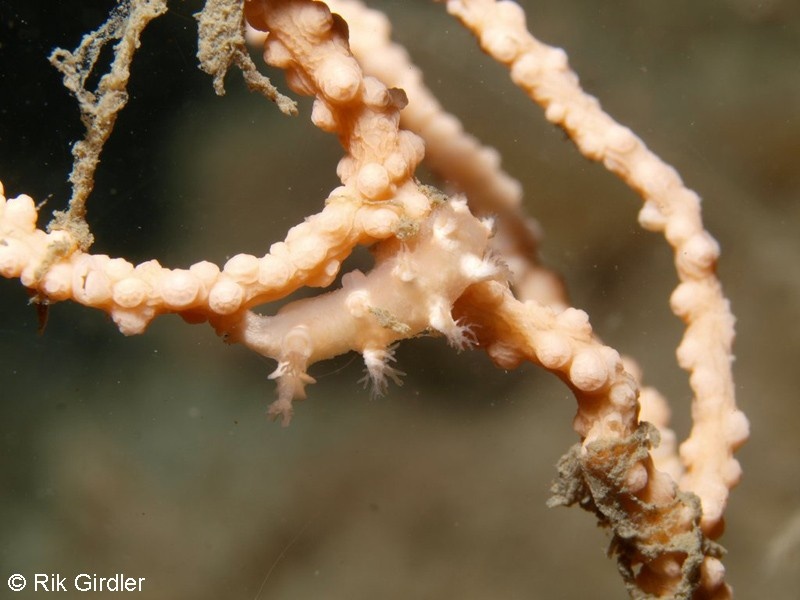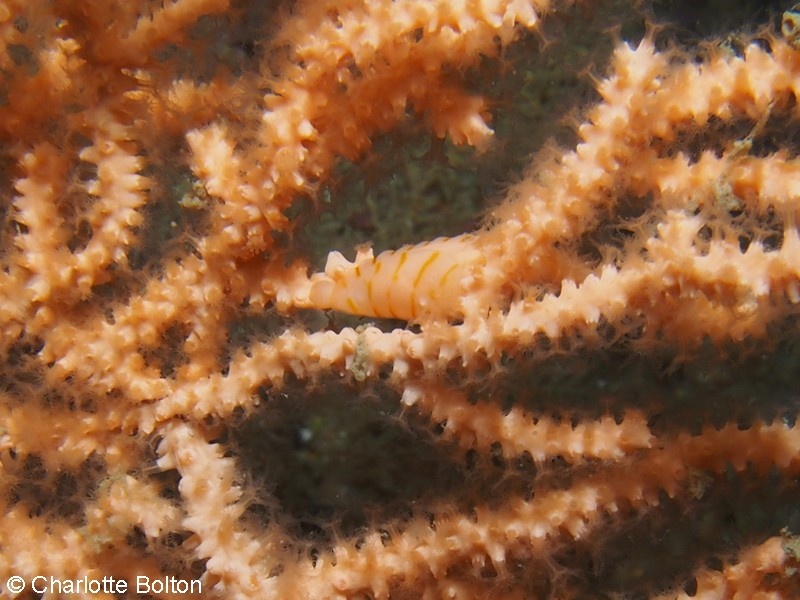All about sea fans
Why they are considered important, where they live, what other marine life they support, and why we'd like you to record them!
Image by Rik Girdler
Recording sea fans
One of our specialist projects since 2001 has been to collect more data on sea fans. To date there have been a number of reports arising from this work all of which can be downloaded from this website.
An extract of the pink sea fan data is also available from the National Biodiversity Network Atlas. This includes all of the records of pink sea fans, sea fan anemones, sea fan nudibranchs and sea fan false cowries. It does not include the size, condition and fouling species data.
As a result, we now have a much better idea about where sea fans can be found. Pink sea fans occur from Poole Bay in Dorset (read the story of Lazarus - 2014 Poole Bay report) and around the whole of the south-west peninsula as far as Ilfracombe as well as in the Channel Islands, Pembrokeshire and southern and western Ireland as far north as Donegal.
We know
- the densest 'forests' of sea fans occur in deeper water, below 25m and generally on flattish rocks and wreckage
- in most areas the populations are generally in good condition, but in some there have been significant levels of disease leading to mortality and overgrowth by other animals
- sea fans are easily damaged by trawling and gill netting
- white sea fans are healthy, but rare
- sea fan anemones are very rare indeed
- up to 20% of sea fans in some areas have sea fan nudibranchs resident on them.
A research paper published in 2015 (Pikesley et al.) used Seasearch data to look at the overlap and the efficacy of Marine Protected Areas created to protect reefs (where sea fans grow) from fishing activities.

Sea fan anemones
Sea fan anemones, Amphianthus dorhnii, are a priority species and seem to be extremely rare. We have recorded them in the Scilly Isles, near Lands End, The Manacles, off Plymouth and in Bigbury Bay, but nowhere else. Even here less than 1% of sea fans have them on them!
The image above shows how small the animals are - you need sharp eyes to spot them underwater! Each anemone is around 1cm across and, as you can see, they wrap around the stems of the sea fan.
Often a number of anemones occur on a single sea fan. This is because of their reproductive strategy which uses basal laceration - basically tearing a new anemone from the base of the old one. The presence of a number of anemones seems to encourage the settlement of other life in areas where the living skin of the sea fan has been damaged by the base of the anemone.

Sea fan nudibranchs
The sea fan nudibranch, Duvaucelia odhneri (previously Tritonia nilsodhneri) seems to be much more common than the sea fan anemone.
The adult animal is an amazing mimic of the sea fan polyps both in colour and shape (see image above) and can be very difficult to spot, especially then the sea fan has extended its polyps to feed.
The egg spirals, though small, do stand out better since they are quite a different shape to anything else on the sea fan. The main picture at the top of this page shows a spiral of eggs around one of the sea fan branches.

Sea fan cowries
The False Cowrie that lives on sea fans (Simnia hiscocki) has been shown to be a separate species to the one which lives on soft corals (Simnia patula). Like the anemones and nudibranchs, it also feeds on the sea fan polyps, but it does not seem to do any permanent damage to the sea fan.
We are very interested in records of this species to establish its distribution and numbers.
What's still to discover?
- Continue to look for sea fan forests, including those on deeper wrecks
- Continue to look at outlying populations
- Continue monitoring the condition of sea fan populations around Guernsey
- Record the presence of sea fan nudibranchs/anemones/cowries
- Record relative numbers of adult sea fans and juvenile 'sticks' to monitor ongoing reproduction (especially in outlying populations)

